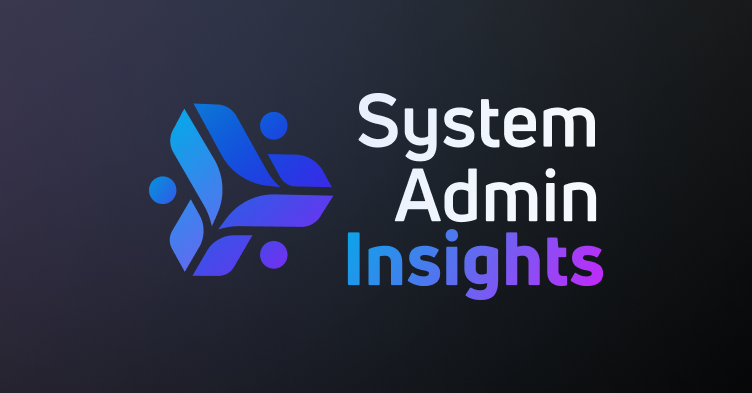I had a conversation with HR leaders at a TroopHR live event last week that gave me flashbacks. They described their experience with an enterprise applicant tracking system (ATS) vendor.
“It was horribly over-engineered,” one told me with a sigh after seeing the sales demo. “You practically need an engineering degree to run it.”
I nodded sympathetically and asked what I’ve learned is the magic question: “How many employees work at your company?”
“Three hundred.”
And there it was.
The Enterprise ATS Trap
I forget sometimes that this isn’t common knowledge, especially for HR leaders earlier in their careers who are focused on finding “best-in-class” solutions. But here’s the truth: enterprise TA solutions vary widely in complexity, and what works beautifully for a large enterprise isn’t always the right fit for a growing 300-person company.
This disconnect between aspiration and operational reality is something I see frequently in our consulting work. HR teams are ambitious – they should be! – but they’re often guided by industry publications showcasing solutions designed for companies with 5,000+ employees and dedicated technical teams.
The problem starts innocently enough. The ambitious HR leader wants the latest and greatest. They’ve seen the demos. They’ve been impressed by the marketing. They want the Ferrari of applicant tracking systems because their company deserves nothing less!
And who can blame them? These enterprise systems are genuinely impressive. They offer customizable workflows that can accommodate complex multinational hiring processes. They integrate with everything from your HRIS to your coffee machine. They provide nuanced data that would make a data scientist weep with joy.
But if you choose a solution designed for a much larger organization, you may end up with a system requiring complex configurations and ongoing maintenance that doesn’t align with your current resources. It’s like buying an industrial kitchen when you’re just learning to cook.
Size-Appropriate Technology: A Framework
When advising clients on technology selection, I typically break companies into four categories:
Small (1–100 employees): Prioritize Simplicity
At this stage, ease of use is everything. You likely have 1–2 HR generalists juggling many responsibilities, and no one has time to manage a complex system. You need a tool that works out of the box with minimal setup and limited maintenance. Consider JazzHR, BreezyHR, Lever’s basic tier, or Greenhouse Essential (if you anticipate rapid growth)
These systems offer streamlined functionality without demanding a heavy lift from internal resources.
Growing (100–500 employees): Enable Efficiency Without Overhead
As hiring increases across functions, so does the need for better workflows, structured approvals, and more visibility. While you may now have a dedicated recruiter or two, you still likely don’t have a full-time system administrator. You need more power—but not enterprise complexity. Consider: Greenhouse Advanced or LeverTRM for strong automation and candidate experience features; SmartRecruiters for collaborative hiring across teams, BambooHR with ATS module for HRIS-ATS simplicity in one ecosystem
Avoid platforms like Workday Recruiting unless you already use Workday HCM—it’s often too resource-intensive at this stage.
Mid-sized (500–2,000 employees): Prepare to Scale with Governance
This is where internal complexity—multiple locations, growing compliance needs, international hiring—starts to surface. You may have a small recruiting ops function or can justify allocating part of someone’s role to ATS administration. At this size, configurability matters, but so does support. Strong fits include iCIMS, ClearCompany, or Jobvite for flexibility and reporting; Greenhouse Expert tier for continued ease-of-use amd deep customization.
Be cautious not to overbuy a full enterprise system unless you have clear internal capacity to maintain it.
Enterprise (2,000+ employees): Invest in Customization and Support
At this level, complexity isn’t optional—it’s baked into how you operate. You’re likely dealing with regional compliance requirements, multiple business units, and highly varied hiring processes. A full-time ATS administrator (or team) is essential. Enterprise-grade solutions like iCIMS, Workday, SAP SuccessFactors, Oracle Recruiting Cloud are appropriate, or Avature, if you need a highly-customizable platform to build tailored experiences
These systems deliver powerful capabilities, but only if you have the team and processes to support them.
The Hidden Cost Nobody Talks About
For companies under 500 employees, I would never recommend the systems these HR leaders were considering because these enterprise solutions come with an invisible price tag: human resources.
Companies that successfully implement heavyweight ATS solutions typically dedicate at least half of a full-time employee to implement, maintain, and optimize that system. Their job is to work with the data analytically and strategically ongoing. Only under these circumstances can you truly justify the ROI.
Let’s break down what proper system administration actually means:
Initial Implementation: Even with professional services support from the vendor (which will most likely cost you), someone internal needs to make critical decisions about configuration, workflows, approval chains, field customization, and integration points. This isn’t a one-time setup – it’s an ongoing evolution as your hiring processes mature.
Training and Adoption: Your recruiters and hiring managers need to actually use the system. Who’s going to train them? Who’s going to troubleshoot when they get stuck? Who’s going to create the documentation for your specific configuration?
Reporting and Analytics: The promise of better data is often what sells sophisticated ATSs, but that data doesn’t analyze itself. Someone needs to build the reports, interpret the trends, and translate insights into actionable recommendations.
Maintenance and Optimization: As your organization evolves, so must your ATS configuration. New departments emerge, hiring workflows change, compliance requirements shift. Someone needs to continually refine the system to match your reality.
And if you’re talking about companies with 10,000+ employees? They have one or more people dedicated full-time to the successful administration of that system. I’ve seen large enterprises with teams of 3-5 people focused exclusively on maintaining their recruitment technology stack.
If you can’t make that kind of investment (and be honest with yourself here), then you’re not doing your company any favors by considering those options. You need to level-set your expectations to vendors who offer a lower level of functionality with more out-of-the-box configuration.
You’ll absolutely encounter some limitations. But working within those boundaries is far more productive than investing in an advanced system that your team can’t fully leverage yet.
I’ve Been There (And I’m a Tech Person)
I always like to reflect on my own small business experiences as a microcosm of what our customers go through. There was a time when tracking much of what we do could be accomplished in spreadsheets, because I’m really good at spreadsheets and our needs were modest.
But there came a point when we simply had to level up our systems. And despite working in tech, with a very techy team, we still experienced what all our customers go through: navigating through endless marketing claims and expert opinions to determine which solution would truly work best for our specific situation.
What made this process so challenging? For one, the information asymmetry is staggering. Vendors know their products inside and out, while buyers are often making a purchase decision they may only make once every few years. It’s hard to even know what questions to ask.
Second, there’s the difficulty in truly understanding your own requirements. We think we know what we need, but often what we’re describing are our current workarounds, not our underlying business problems.
Third, there’s the influence of what I call “aspiration inflation” – we don’t just want what we need now; we want what we think we might need three years from now. This often leads to overbuying.
Practical Steps for Right-Sizing Your ATS
If you’re in the market for a new ATS, here are some practical steps to ensure you don’t overbuy:
- Start with your current hiring volume and projected growth: Be realistic. When you’re hiring 50 people this year and expect to hire 75 next year, you don’t need a system designed to process thousands of applications daily.
- Map your actual hiring workflow: Not the one in your policies, but the one your team actually follows. Focus on how many approval stages exist, how many people are involved in a typical hire, and how standardized your process is across departments.
- Identify your genuine pain points: Know what’s really breaking in your current approach. This could be candidate experience, internal communication, data visibility, or compliance. Focus on solving these specific problems rather than buying a Swiss Army knife of features you won’t use.
- Consider your technical resources: Determine who will own the system, how much time they can realistically dedicate to it, and their technical comfort level. Be honest about these constraints.
- Prioritize adoption over advanced functionality: A simple system that everyone uses consistently will generate more value than a sophisticated one that recruiters and hiring managers work around because it’s too cumbersome.
- Build in room to grow – but not too much: Look for systems that can scale with you over the next 2-3 years, but resist the temptation to buy for where you hope to be in 5+ years. The technology landscape will change dramatically in that timeframe anyway, and vendor contracts are typically 1-3 years in duration. Buy with the expectation that you may need to move to a more robust system in a few years.
The Community Advantage
One of the advantages of our System Admin Insights community, tailor-made for HR Sys Admins and TA leaders looking to learn from them, is that you can tap into a network of hundreds of system administrators and get their real, unfiltered opinions. Many of these admins have worked across companies of varying sizes and have used multiple solutions beyond just ours.
These peer-to-peer knowledge sharing opportunities are invaluable. While vendors can tell you what their system is designed to do, only practitioners can tell you what it’s really like to live with day-to-day. They share implementation horror stories and unexpected wins. They reveal which promised integrations work seamlessly and which ones require constant babysitting.
Most importantly, they can help you right-size your expectations and your investment. There’s nothing quite as valuable as hearing from someone at a similarly-sized company about their experience with a particular system to give you confidence in your decision-making.
This is a great reason for you or someone on your team to get involved in our community, even in the free tier in the general space. Make those connections and ask questions from highly tech-literate HR systems professionals who don’t have a quota to meet by selling you something you don’t need.
When It’s Time to Level Up
Of course, there will come a point when your company genuinely outgrows its initial ATS. Here are the signals that indicate that this time has arrived:
Your hiring volume has increased dramatically: When you’re now hiring hundreds of people annually across multiple departments and locations, your basic ATS may be creating bottlenecks.
Your compliance requirements have become more complex: Operating in multiple jurisdictions with different regulatory frameworks may demand more sophisticated tracking and reporting.
You have dedicated recruiting operations staff: When you’ve invested in people whose job is to optimize your hiring process, they deserve tools that match their capabilities.
Your basic reporting no longer answers your key questions: When leadership asks for insights your current system can’t provide, it might be time for more advanced analytics.
You’re willing to invest in proper implementation and administration: This is crucial. Even when these other factors align, if you’re not ready to commit resources to managing a more complex system, it’s better to wait.
Your company has undergone (or is undergoing) a merger or acquisition: M&A activity often brings multiple systems, processes, and compliance environments into play. A scalable, configurable ATS can help unify hiring under one roof.
Internal complexity has increased—even if headcount hasn’t: Growth in business units, specialized hiring processes, or matrixed reporting structures can all drive the need for greater flexibility and control, regardless of raw size.
The Bottom Line
The right ATS is out there for your company—just make sure it’s one you can actually use, not just one that looks impressive in demos. Your future self will thank you for the hours of frustration avoided, the budget not wasted, and the hiring process that actually works for your real-world needs.
Remember: the goal isn’t to have the most sophisticated ATS in your industry. The goal is to have the right ATS for your specific organization at its current stage of growth. That alignment – not feature count – is what leads to successful hiring outcomes.
And when the time does come to level up, you’ll approach that decision with clearer eyes and more realistic expectations. Your technology should grow with your company, not outpace it.



